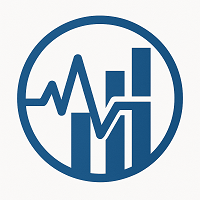QBTS: Riding the Quantum Wave to Enterprise Tech Dominance
The enterprise technology landscape is on the cusp of a revolution.
, once confined to academic labs, is now poised to disrupt industries from pharmaceuticals to national defense, and D-Wave Quantum Inc. (QBTS) stands at the forefront of this transformation. With its recent breakthroughs, surging stock performance, and strategic partnerships, QBTS is no longer just a speculative play—it's a critical investment in the future of computing.The Quantum Supremacy Breakthrough: A Real-World Milestone
On May 20, 2025, QBTS announced the general availability of its Advantage2 quantum computer, a system capable of solving problems in minutes that would take classical supercomputers millions of years. This leap was underscored by a landmark achievement: the first demonstration of quantum supremacy on a useful, real-world problem. In a peer-reviewed study published in Science, D-Wave's Advantage2 simulated magnetic material behavior in minutes—a task that would require nearly one million years on the world's fastest classical supercomputer, Frontier.

This milestone isn't just theoretical. The Advantage2's 4,400 qubits and 20-way qubit connectivity enable solutions to optimization challenges that classical systems cannot tackle at scale. From drug discovery to supply chain logistics, industries are now racing to adopt quantum-ready systems—and D-Wave is already ahead of the curve.
Financial Momentum: Profitability on the Horizon
QBTS's Q1 2025 earnings reveal a company in transition from a high-risk startup to a financially viable tech leader. Revenue skyrocketed to $15 million, a 509% year-over-year jump, fueled by the sale of an Advantage system to Europe's Jülich Supercomputing Centre. Gross margins hit a staggering 92.5% (GAAP), while net losses narrowed to $5.4 million, down 68% from 2024. With $304 million in cash and access to an additional $37.8 million credit line, QBTS has the liquidity to invest in R&D while scaling operations.
The stock's 23.96% single-day jump on May 20 reflects investor recognition of this transformation. Yet the dips—like the 3.1% decline on May 18—highlight lingering concerns about near-term demand. These fluctuations, however, are overshadowed by the long-term opportunity: quantum computing's total addressable market is projected to hit $13 billion by 2030, per McKinsey, with D-Wave already capturing early wins.
Enterprise Adoption: Quantum's Practical Payoff
QBTS's success isn't confined to labs. Customers are already deploying its systems to solve pressing problems:
- Ford Otosan: Reduced vehicle scheduling times from 30 minutes to 5 minutes using a hybrid quantum-AI system, slashing costs and boosting efficiency.
- Japan Tobacco: Accelerated drug discovery by generating molecular structures faster than classical methods, a breakthrough for pharmaceutical R&D.
- Davidson Technologies: Partnered to install an Advantage2 system in Huntsville, Alabama, targeting national security applications—a testament to quantum's strategic importance.
These use cases are no gimmicks. At QBTS's Qubits 2025 conference, customers like NTT DOCOMO and SAS showcased how quantum optimization is rewriting industries. Meanwhile, D-Wave's research into “Proof of Quantum Work” blockchain protocols could upend energy-intensive proof-of-work systems, offering a sustainable alternative.
Risks and the Path Forward
QBTS isn't without challenges. Operating expenses rose 31% in Q1 to $25.2 million, reflecting investments in R&D and marketing. Bookings fell 64% year-over-year to $1.6 million, hinting at delayed customer decisions. However, these hurdles are manageable. The company's focus on high-margin system sales and partnerships with institutions like Jülich suggests a path to sustained growth.
Why Act Now? The Quantum Window Is Opening
The enterprise tech market is in a state of flux. Companies like Google, Microsoft, and IBM are all chasing quantum supremacy, but D-Wave holds two critical advantages:
1. First-Mover Dominance: QBTS is the only company commercializing both annealing and gate-model quantum systems, giving it flexibility to serve diverse industries.
2. Proven Ecosystem: Its 23% increase in Qubits 2025 conference attendance signals a growing developer community and application pipeline.
The next 12–18 months will see quantum move from niche to mainstream. As industries like finance, logistics, and defense adopt quantum-ready systems, QBTS's early leadership will translate into outsized market share. With a $1.2 billion market cap and a stock price still below $20, QBTS offers a rare blend of speculative upside and tangible financial progress.
Conclusion: The Quantum Transition Starts Here
Quantum computing isn't a distant dream—it's a present-day reality, and D-Wave is the pioneer. For investors, QBTS presents a compelling opportunity to capitalize on a $13 billion market before it matures. The stock's recent volatility is a buying opportunity, not a warning: with a strong balance sheet, proven technology, and a pipeline of enterprise wins, QBTS is positioned to dominate the quantum era.
The question isn't whether quantum computing will disrupt enterprise tech—it's whether you'll be on the right side of that disruption. For QBTS, the future is already here.
Investors are advised to conduct their own due diligence and consult with a financial advisor before making investment decisions.

Comments
No comments yet